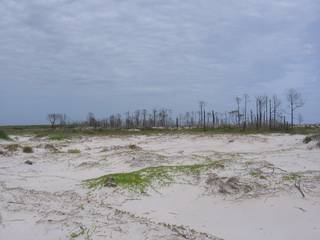
Petit Bois Island is an island off the coast of the U.S. state of Mississippi, south of Pascagoula. It is part of Jackson County, Mississippi. Since 1971 it has been a part of Gulf Islands National Seashore, administered by the U.S. National Park Service. Petit Bois Island is located at . According to the United States Geological Survey, variant names are l'Isle de Petit Bois and Petitbois Island. Petit bois in French means "little woods". The island was so named by the early French explorers due to a small wooded section located on the eastern end of this mostly sand and scrub-covered island. Following the island's inundation during Hurricane Katrina, most of the trees comprising the little woods section have died.
